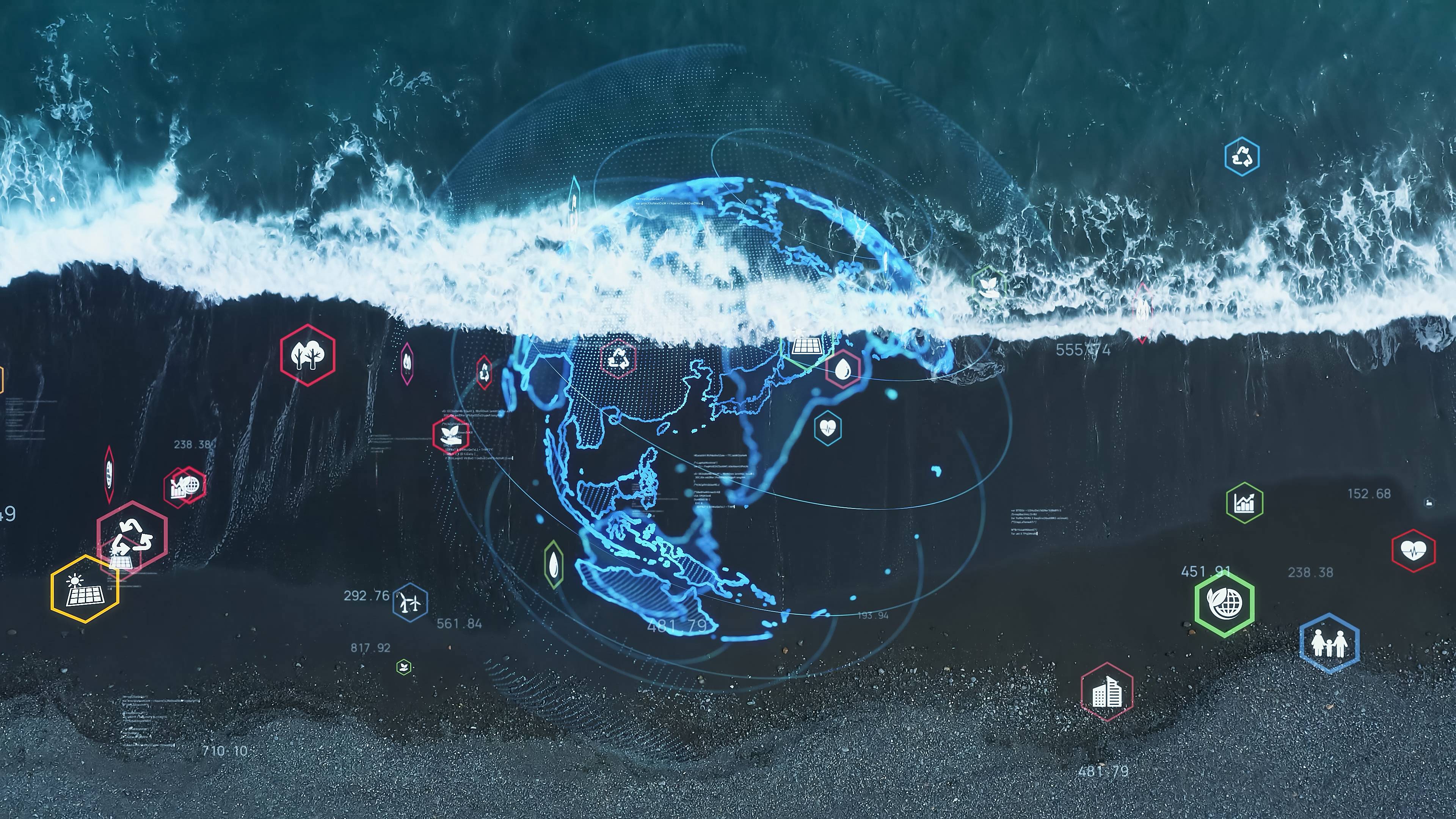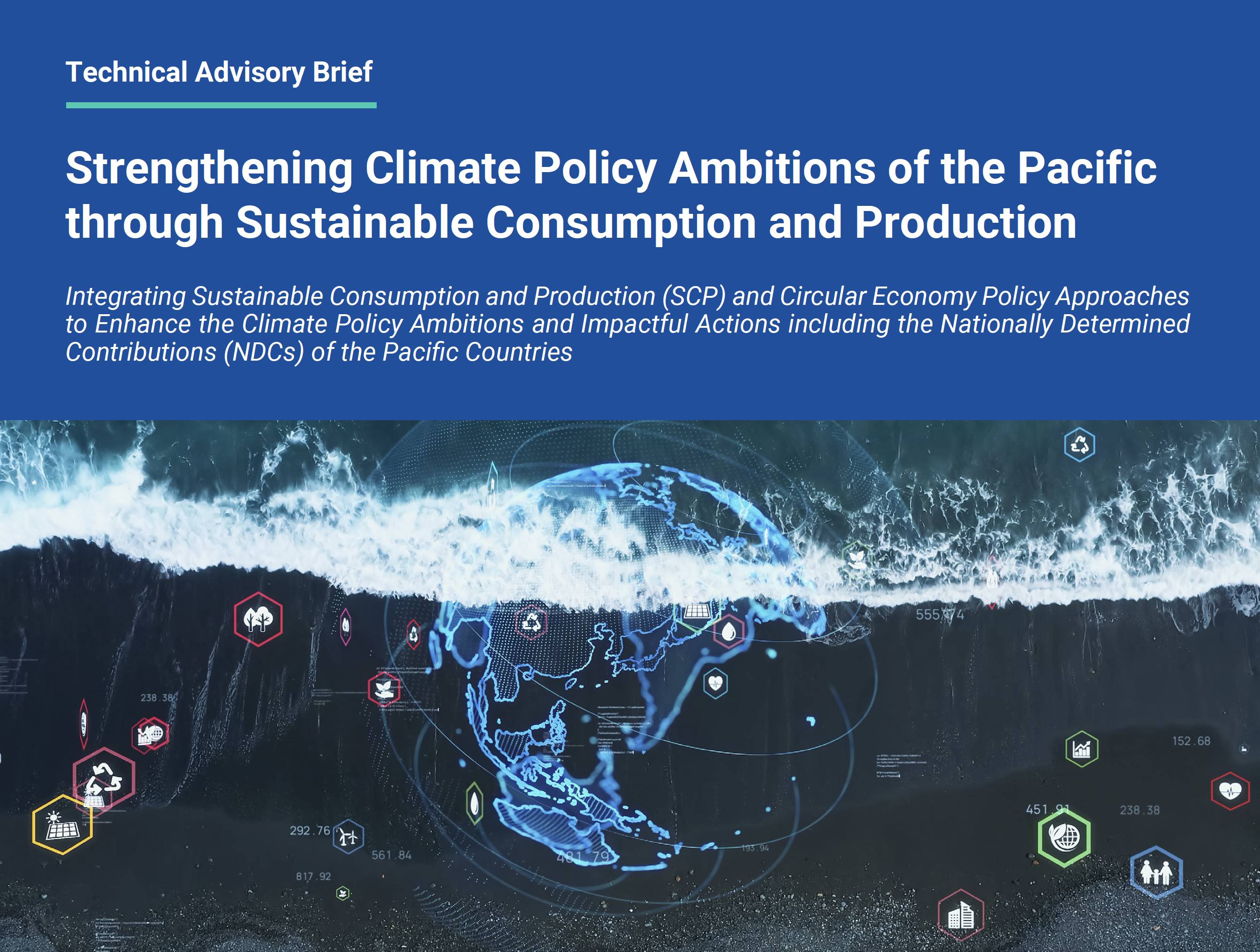
Locations: Pacific region
Themes: Climate Action, Resource use Efficiency
The Challenge
Unsustainable patterns of consumption and production (SCP) are the root causes of the triple planetary crises of climate change, biodiversity loss and pollution. It is widely accepted that the appropriate adjustments in the production and consumption patterns can potentially avoid a significant portion of global greenhouse gas emissions, both directly and indirectly.
The SCP and Circular Economy (CE) provide a significant opportunity for the Pacific countries to meet their development challenges due to resource constraints and remoteness. Increasing material use efficiency provides opportunities to address these challenges while significantly contributing to climate action as material production and use are recognised as a leading source of emissions. According to the International Panel of Resources over 55% of global emissions are due to extraction and processing of natural resources. The current strategies adopted and endorsed by the Pacific countries under several sectors and themes suggest that the importance of SCP and circular economy have already been recognized. The Third Clean Pacific Roundtable organized by the Secretariat of the Pacific Regional Environment Programme (SPREP) in 2021 was dedicated to Circular Economy, in which the member states recognized CE as an imperative strategy for the region. The circular economy’s potential not only to reduce pollution and generate the necessary resources to manage waste generated but to create new jobs and be an integral part of the Pacific’s commitment to reducing our climate footprint and remaining below the global 1.5-degree threshold has been reiterated there.
The remoteness and challenging access to material resources of the Pacific countries have posed a distinced set of vulnerabilities that have been amplified by the current and projected impacts of climate change. With the current and projected material resources requirement for climate change adaptation initiatives including infrastructure, it is imperative to consider resource efficiency, CE and SCP within overall climate ambition. Desipite these challenges, the Pacific countries have demonstrated significant leadership in the global climate change policy notably in adoption of the Paris Agreement which remains the major drive of global collective climate actions. The Parties to the Paris Agreement are expected to submit their updated NDCs ahead of the UNFCCC COP30 in 2025, and the Pacific countries have already called for ambitious NDC targets from all the parties. The new NDC enhancement will be an opportunity for the Pacific countries to streamline their national development priorities, including through material resource efficiency improvement.
Objectives
This Technical Advisory (TA) aims at leveraging SCP and CE strategies and options to strengthen the climate ambition and resilience of the Pacific countries. Creating a higher level of synergies among the policies and strategies of material use, climate and resilient economic growth is at the core of this TA. It seeks to capture current experiences, engage stakeholders, and co-create policy options related to SCP and CE to strengthen the climate ambitions, including those reflected through the NDCs and Long-term Low Emission Development Strategies (LT-LEDS).
It recognises contributions of the organisations and stakeholders actively engaged in the process of enhancing climate policies and actions , including through the NDCs and LT-LEDS, in the region. SWITCH-Asia will collaborate with them to build on existing synergies.
Its overall objective is to simultaneously enhance the climate ambition and resilience of the Pacific Region through regionally and nationally tailored SCP and CE policies and actions.
Way Forward
- Conduct a rapid assessment to map policies, strategies, action plans related to SCP, CE, and climate, including NDCs, along with identifying the key national stakeholders in several countries;
- Assess material use related data to identify opportunities for significant resources reduction, climate change mitigation, and resilience building for the region and in the selected countries of the Pacific;
- Develop mapping and assessment country report on resource efficiency and climate ambition for the participating countries;
- Create country-specific white papers with recommendations to inform NDC 3.0 and LT-LEDS development processes;
- Conduct detailed assessments to suggest climate targets on SCP and CE for the priority sectors (contingent to country requests);
- Support and engage in NDC 3.0 and LT-LEDS processes in the countries to deliberate and integrate SCP/CE options in collaboration with the key stakeholders;
- Share knowledge among stakeholders on integration of SCP and CE into climate ambition processes.



